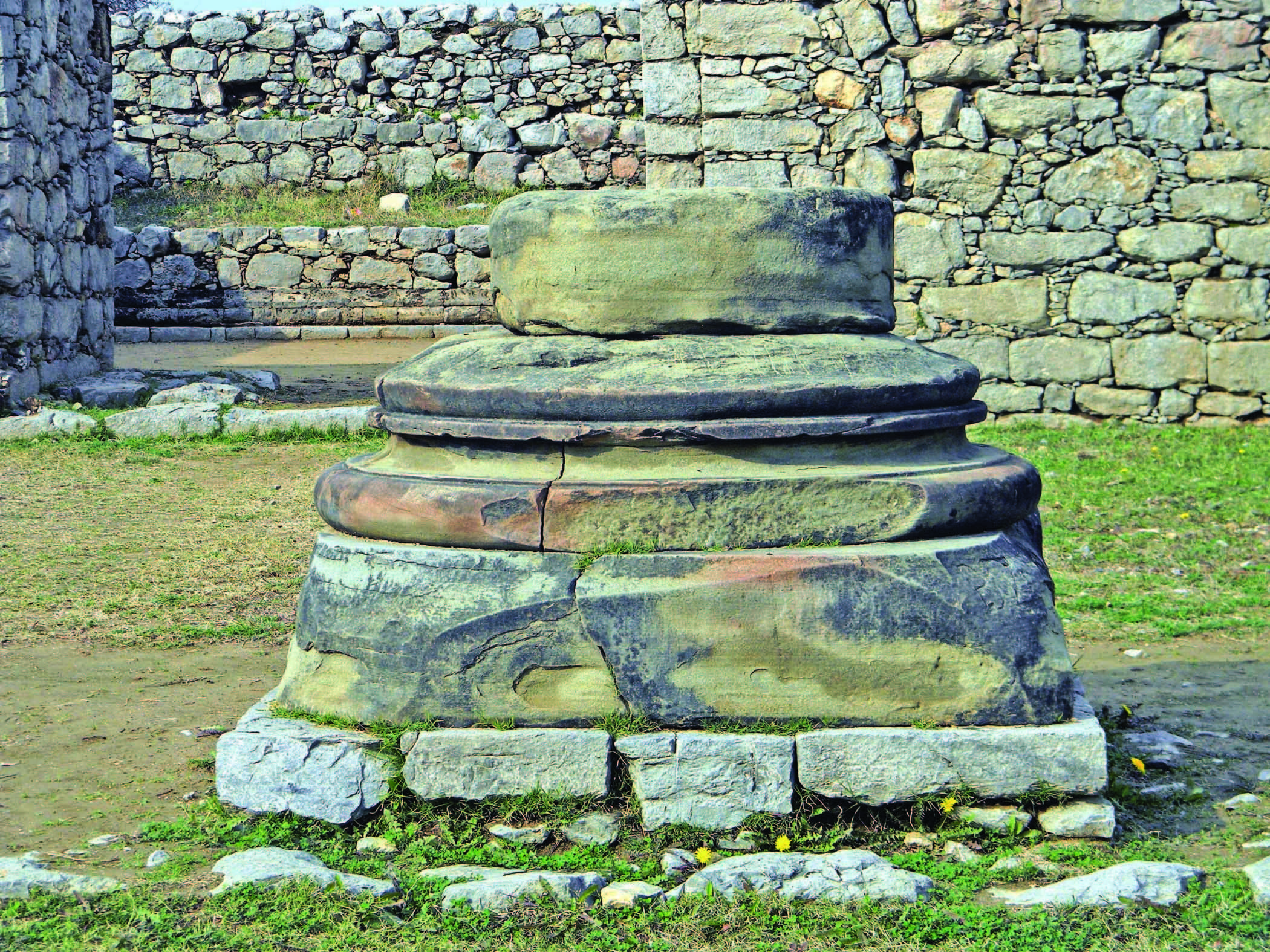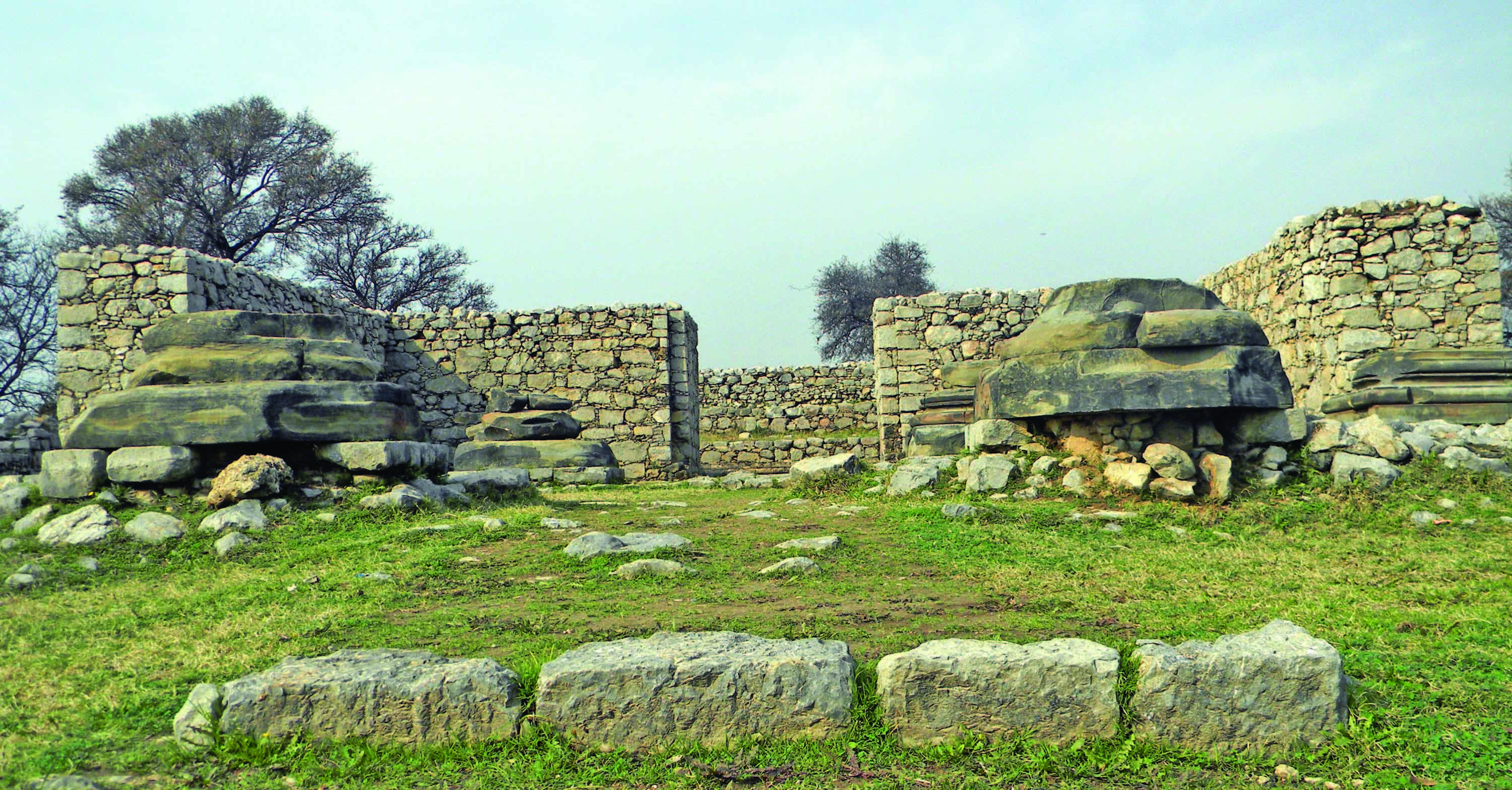Jandial — a Zoroastrian temple in heart of Buddhist civilisation
 |
| Base of the column of sandstone placed in front of Jandial temple. |
Taxila is known as the cradle of Buddhist civilisation, with numerous Buddhist sites. But few know that in heart of the great Buddhist civilisation there stands a Zoroastrian temple known as the Jandial Temple.
The Jandial temple dates back to 1st century BC, standing on an artificial mound, north of Sirkap City.
 |
| Fragments of column and pilasters made of sandstone built in front of Jandial temple. |
 |
| Stairs leading to Jandial temple — a pure Greek style of architecture. |
The resemblance of this temple to classical Greek temples is striking. The structure of the temple is in limestone and kanjur with plaster on the façade, patches of which are still intact. Kanjur is a porous form of sedimentary stone, used in Gandhara. Some large columns and pillars are constructed with massive blocks of sandstone.
Built in the Scythio-Parthian period, this is believed to be the temple described by Philostratus in his Life of Apollonius of Tyana. According to A.G Lone, a former curator of Taxila Museum, Philostratus may have spoken of this temple when he says “They saw, a temple in front of the wall, about 100 feet in length and built of shell like stone. There were brazen tablets on which were portrayed the deeds of Porus and Alexander”.
Behind the main building is a set of stairs that leads to a platform where a Parthian fire Sanctuary probably existed in the 1st century BC.
 |
| The outer wall of Jandial temple. Having been built in 1st century BC, the wall still stands tall and strong. |
 |
| A board erected at the site of Jandial temple welcomes visitors with information about the site both in English and Urdu. |
Late veteran scholar and historian A.H. Dani, in his book ‘History of Civilisations of Central Asia’ notes that “the remains of a Zoroastrian fire temple were shown from Jandial, said to have been built by the Indo-Parthians”.
Mahmoodul Hasan Shah, assistant director in the federal directorate-general of archaeology and museums, quoting Dr A.H. Dani, said: “The Jandial temple was found at the same place where Alexander the Great erected his tent.”
He said that the Greek rulers of Taxila performed religious ceremonies of their own faith at this temple.
 |
| The front view of Jandial temple. |
All photos by writer.
Published in Dawn, July 12th, 2015
On a mobile phone? Get the Dawn Mobile App: Apple Store | Google Play

